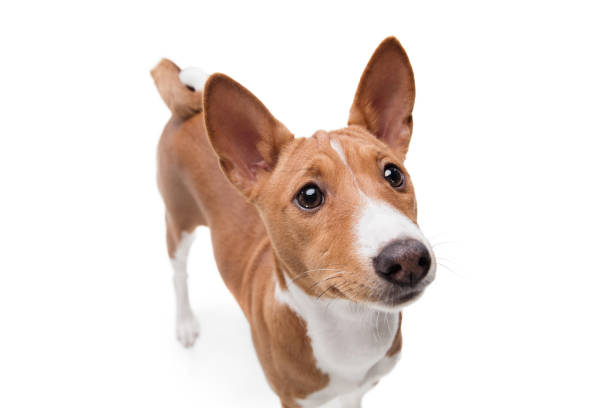The Basenji, often referred to as the “barkless dog,” is a unique and ancient breed known for its independence, intelligence, and agility. Training a Basenji puppy can be a rewarding experience, but it requires patience, consistency, and understanding of the breed’s specific needs and characteristics. This guide will walk you through the essentials of training your Basenji puppy at home, covering foundational skills, problem behaviors, and tips for success.
Understanding the Basenji Breed
Before diving into training, it’s crucial to understand the Basenji’s characteristics. This breed is known for:
Independence: Basenjis are often described as “cat-like” due to their independent nature. They are intelligent but can be aloof.
High Energy: Basenjis are an active breed with high exercise needs. They excel in agility and require physical and mental stimulation.
Prey Drive: With a strong hunting instinct, Basenjis may be easily distracted by small animals or moving objects.
Low Barking: Unlike most dogs, Basenjis are known for their lack of barking. They communicate through other vocalizations and body language.
Understanding these traits will help tailor your training approach to meet the needs of your Basenji puppy effectively.
Setting Up for Success
Creating a conducive training environment is essential for success:
Designate a Training Area: Choose a quiet, distraction-free area in your home for training sessions. This helps your puppy focus better.
Gather Training Tools: Essential tools include a collar or harness, a leash, high-value treats, and interactive toys.
Establish a Routine: Consistency is key in training. Schedule regular training sessions and stick to a routine to reinforce learning.
Basic Commands and Training Techniques
Teaching Basic Commands
Start with foundational commands to build a strong training base:
Sit: Hold a treat close to your puppy’s nose, then slowly move it upward. As their head follows the treat, their bottom will lower to the ground. Once they are sitting, say “Sit” and reward them immediately.
Stay: Begin with your puppy in the “Sit” position. Open your palm towards them and say “Stay.” Take a step back, then return and reward them if they remain in place. Gradually increase the distance and duration.
Come: Attach a long leash to your puppy’s collar. Say “Come” while gently pulling the leash towards you. Reward them with praise and treats when they approach.
Positive Reinforcement
Use positive reinforcement to encourage desired behaviors:
Treats and Praise: Offer high-value treats and enthusiastic praise immediately after your puppy performs the desired action. This helps them associate the behavior with positive outcomes.
Consistency: Ensure that all family members use the same commands and reward system to avoid confusion.
Short Sessions: Keep training sessions short (5-10 minutes) to maintain your puppy’s attention and prevent frustration.
Socialization
Socialization is crucial for a well-rounded Basenji:
Introduce New Experiences: Expose your puppy to various environments, people, and other animals in a controlled manner. This helps them become adaptable and less fearful.
Positive Encounters: Ensure that new experiences are positive by rewarding your puppy with treats and praise during and after the encounter.
Puppy Classes: Consider enrolling your Basenji in puppy socialization classes to provide structured socialization opportunities.
Dealing with Problem Behaviors
Basenjis, like all puppies, may exhibit problem behaviors. Address these issues with patience and consistency:
Chewing: Provide appropriate chew toys and redirect your puppy to them if they chew on inappropriate items. Use bitter-tasting sprays on furniture to discourage chewing.
Jumping: When your puppy jumps up, turn away and ignore them until they calm down. Reward them when all four paws are on the ground.
Digging: Offer a designated digging area, such as a sandbox, to satisfy their instinctual needs. Redirect them to this area when they dig inappropriately.
Advanced Training
Once your Basenji has mastered basic commands, you can introduce advanced training:
Agility Training: Basenjis excel in agility due to their high energy and intelligence. Set up an agility course with jumps, tunnels, and weave poles to challenge them physically and mentally.
Trick Training: Teach your Basenji fun tricks like “Roll Over,” “Play Dead,” or “Spin.” Use the same positive reinforcement techniques as with basic commands.
Health and Well-being
A well-trained Basenji is also a healthy Basenji:
Regular Exercise: Ensure your puppy gets adequate physical activity to meet their energy needs. Daily walks, playtime, and mental stimulation are essential.
Proper Nutrition: Feed your Basenji a balanced diet suited to their age, size, and activity level. Consult your veterinarian for specific dietary recommendations.
Routine Veterinary Care: Schedule regular check-ups with your veterinarian to monitor your puppy’s health and address any concerns.
Overcoming Training Challenges
Training a Basenji puppy may come with challenges:
Stubbornness: Basenjis can be stubborn. Use patience and persistence, and avoid punishment. Focus on rewarding positive behaviors to motivate your puppy.
Distractions: Due to their prey drive, Basenjis may be easily distracted. Practice in different environments to help your puppy learn to focus amidst distractions.
Inconsistency: Inconsistent training can confuse your puppy. Ensure that all family members are on the same page regarding commands and training techniques.
Building a Strong Bond
Training is not just about teaching commands; it’s also about building a strong bond with your Basenji:
Quality Time: Spend quality time with your puppy through play, training, and relaxation. This strengthens your relationship and fosters trust.
Positive Interactions: Engage with your puppy in positive, enjoyable activities to build their confidence and reinforce your bond.
See also: Are Schnauzers Stubborn?
Conclusion
Training a Basenji puppy at home requires understanding the breed’s unique traits, using positive reinforcement, and maintaining consistency. By following the guidelines outlined in this article, you can help your Basenji grow into a well-behaved, happy, and confident adult dog. Remember that patience and persistence are key, and celebrating small successes along the way will make the training process enjoyable for both you and your Basenji.


